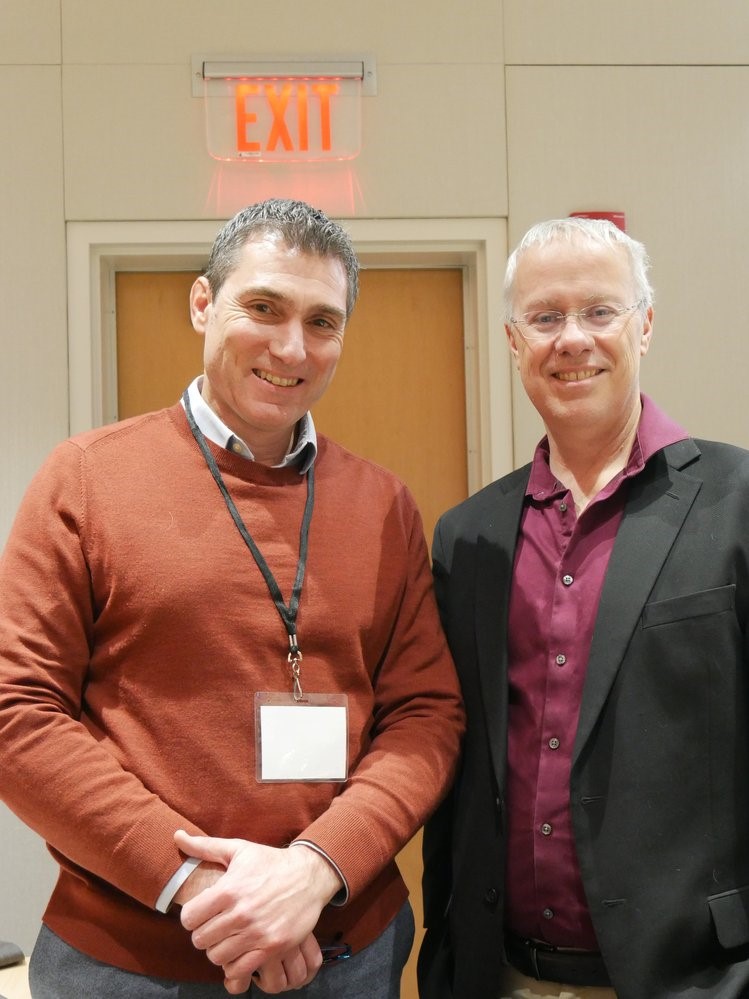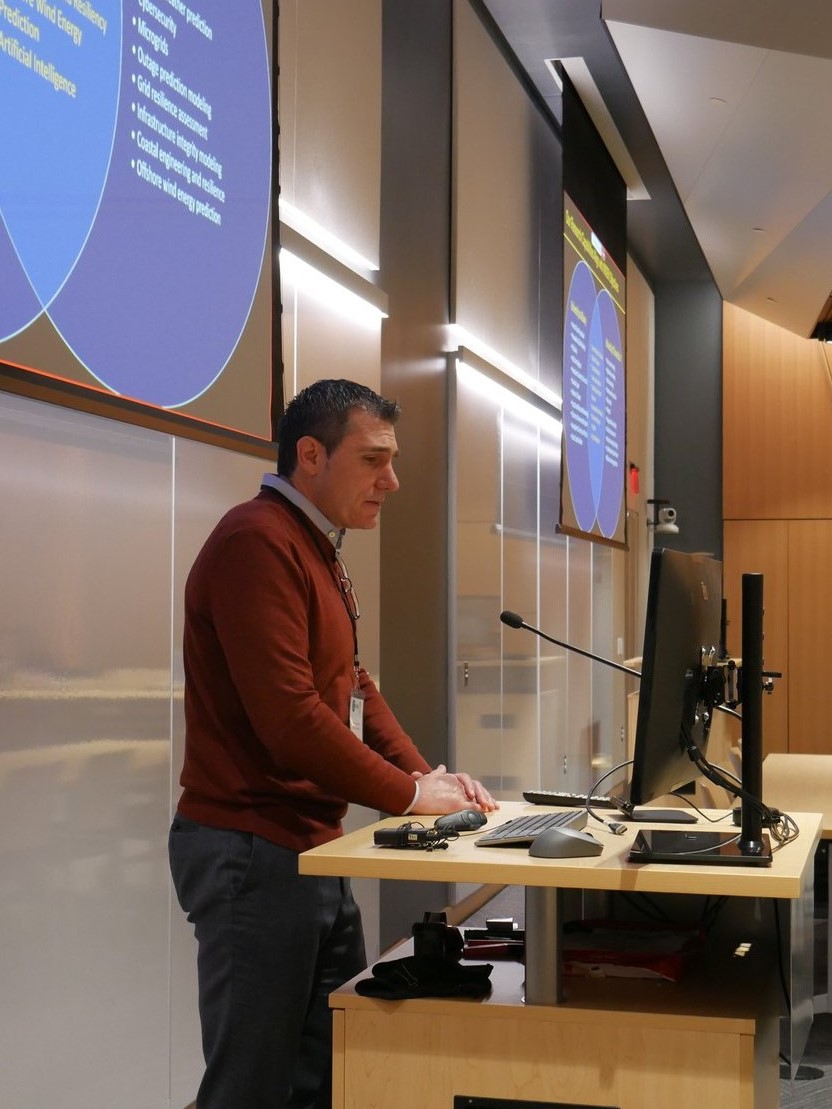A Partnership of UConn and Eversource
Eversource Energy Center
Author: WISER NSF IUCRC Awarded Eight UConn Projects to Advance Weather Innovation and Energy Resilience
On February 6–7, the National Science Foundation (NSF) Industry-University Cooperative Research Center (IUCRC) for Weather Innovation and Smart Energy and Resilience (WISER) hosted its second Industry Advisory Board meeting, at which it announced funding for new projects to advance weather- and climate-based solutions for the energy industry. Of the ten newly awarded projects, UConn is involved in all but two.
Established in 2023, WISER NSF IUCRC is a two-site center established by the University at Albany and the University of Connecticut. It combines cutting-edge technologies with the benefits of industry partnerships to address the evolving challenges posed by extreme weather and climate change. This year WISER’s Industry Advisory Board consists of ten members: Avangrid, Central Hudson Gas & Electric Corp, Con Edison, Eversource Energy, Hydro‑Québec, National Grid, New York Power Authority, New York State Energy Research and Development Authority, New York State Foundation for Science, Technology, and Innovation, and Pacific Gas and Electric Company. According to Professor Emmanouil Anagnostou, WISER’s UConn Site PI, “By fostering collaboration between academia and industry, WISER is poised to become a leading resource for solutions that enhance resilience and sustainability in the energy sector.”
The project selection process was highly competitive, with the Industry Advisory Board expressing enthusiasm for the innovative approaches proposed. The projects will expand WISER’s research portfolio in weather and power outage prediction, energy demand, grid resilience, and risk management. Says Professor Anagnostou, “I am excited by the number of highly competitive proposals submitted by UConn faculty and look forward to growing UConn’s research and technology innovation on energy resilience and security.”
The following are the eight WISER projects in which UConn will take part:
1. Wind power resources for Northeast US under a changing climate (PI: M. Astitha, School of Civil and Environmental Engineering)
2. Extreme heat metrics for more accurate energy demand prediction (PI: G. Wang, School of Civil and Environmental Engineering)
3. Integrating interdisciplinary resilience indices for power outages and restorations (PI: W. Zhang, School of Civil and Environmental Engineering)
4. Predicting extreme weather–induced power outages with spatially aware hybrid graph neural networks (PI: D. Song, School of Computing)
5. A mapping tool for addressing socioeconomic and demographic disparities in power outage impacts (PI: A. Bagtzoglou, School of Civil and Environmental Engineering)
6. Quantifying grid resiliency using GFM with HELICS co-simulation for enhancing outage management during the extreme weather events (PI: S.Y. Park, Department of Electrical and Computer Engineering)
7. Weather-power-grid testbed experiments for risk contingency management during hazards: cascading failures, fragility curves, and grid and weather monitoring needs (PI: M. Peña, School of Civil and Environmental Engineering)
8. Snowstorm changes and their impact on power outages over the Northeast (co-PI: D. Cerrai, School of Civil and Environmental Engineering)


Author: Prof. Zongjie Wang is Appointed as Associate Director for DEI and Industrial Workforce Development
Author: Forecasting Wind Energy
Author: EEC Annual Workshop Presentations
| Pillars 1-2 | Pillars 3-4 | Pillar 5 | Advisory Board Presentation |
| Click Here | Click Here | Click Here | Click Here |
Author: UConn Receives Department of Energy Grant Supporting Offshore Wind Grid Integration
Author: Connecticut and UConn are Leaders in Clean Energy and Sustainability
Author: Clean Energy Sustainability Innovation Program
CleanEnergySustainability_InnovationProgram
Author: A massive weather station at UConn seeks to unlock secrets stored in storm clouds
Author: UConn, Eversource Energy Center to Develop Marine Model for NOAA Software
A Wind-Wave-Current Data Assimilation Scheme for the 3D-Real Time Mesoscale Analysis” is a 3-year project that aims to advance the science and technology of data assimilation of surface wind, significant wave height, and surface ocean currents. The operational RTMA system, which was implemented in 2006, has been a cornerstone analysis model used for the official “analysis of records” by the National Weather Service to calibrate and validate its numerical prediction models. The RTMA will be replaced by the 3D-RTMA, which will feature deep changes in its numerical architecture, higher resolution, and a wider set of analysis products. UConn has been selected to lead the development of its marine component to effectively exploit marine observations and the integration of waves and current models that capture key processes at the air-sea interface.
Author: Affiliate Scientist with the National Center for Atmospheric Research (NCAR)
Our own Prof. Marina Astitha has been officially appointed as an Affiliate Scientist with the National Center for Atmospheric Research (NCAR), Research Applications Laboratory (RAL), a three year term through 2025. It is a wonderful achievement that will enhance our Center’s visibility and pave the way to more interactions with NCAR/RAL researchers regarding research collaborations and student advising.